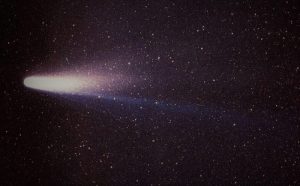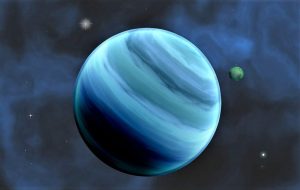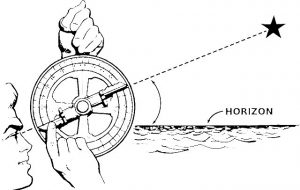Halley’s comet
Every 76 years you can see a bright, large comet from the Earth. This is Halley's Comet, one of the best known short-haul kites in the Kuiper belt. Its origin, according to research, occurred in the Oort Cloud so, it is believed that at its beginning it was a long-haul comet. According to some specialists, this is the only comet that a human being could see twice in his life.

- Discoverer: Edmund Halley
- Orbital period: 75.3 years
- When it was last seen: February 1986
- When it will be visible again: July 2061
What is Halley's Comet?
Halley's Comet, or 1P/Halley, is a large, high-gloss comet that orbits the Sun every 76 years. It is the best known short-haul kite in the Kuiper belt. It had its origins in the Oort Cloud and is believed to have been a long-haul comet in its early days. The scientist who discovered its orbit and named the comet was the English astronomer Edmund Halley in 1705. The last time it was seen on Earth was in 1986 and it is estimated that it will be observed again in the year 2061, possibly in June or July.
Halley’s Comet history
The presence of Halley’s comet was recorded by Chinese astronomers and Babylonians from 240 B.C. and later on by Europeans in the Middle Ages. They did not report reappearances of it, possibly because of its trajectory.
Here are some of the years in which the comet was seen: 239 B.C., 164 B.C. (No record), 86 B.C., 11 B.C., 66, 141, 218, 295, 374, 451, 530, 607, 684, 760, 837, 912, 989, 1066, 1145, 1222, 1301, 1378, 1456, 1531, 1607, 1682, 1759, 1835, 1910, 1986.
Halley’s comet, whose official name is 1P/Halley, received its name in 1705 by the English astronomer Edmund Halley who discovered the comet’ orbit proving that the characteristics of this comet were similar to those presented in the years 1682, 1607, 1531. According to Edmund Halley’s studies, the comet would pass again in 1757 but it was delayed in its trajectory making visual presence the following year. The German astronomer confirmed that its delay was due to the attraction of Jupiter and Saturn. Edmund could not confirm his theory, as he died in 1742, 17 years before the comet passed again.
The most recent apparition of Halley’s comet was in 1986, when it could be observed in more detail by spacecraft. This allowed to generate new hypotheses about its origin and structure.
Halley’s Comet origin
Halley’s comet has its origin in the Oort Cloud where comets of long trajectory come from. For this reason, it is believed that in its beginnings, Halley had a long path and that little by little it was reduced because it was trapped by the enormous gaseous bodies of the Solar System, which made its orbit shorten. As short trajectory comets generally come from the Kuiper Belt, it is considered both from the Oort Cloud, where it originates, and from Kuiper Belt because it is in the orbits of short trajectory comets.
Halley’s Comet characteristics
Halley’s Comet has the following characteristics:
- It is a short-path comet (orbit 76 years old).
- It comes from the Oort Cloud, but its trajectory is the same as the Kuiper Belt comets.
- Its trajectory is regular and well defined.
- It has a structure made up of a nucleus and a comma.
- It has a big size and a lot of brightness in spite of being a black body.
- Its core is 15 kilometers long, 8 kilometers high and 8 kilometers wide, peanut-shaped.
- Its core contains water, carbon monoxide, formaldehyde, carbon dioxide, methane, ammonia and hydro cyanuric acid.
- Halley’s coma extends into space for millions of miles.
Halley’s Comet orbit
The orbit of Halley’s comet is elliptical and retrograde as it goes in the opposite direction to the planets, with an inclination of 18 º. Its trajectory is regular and well defined.
The duration of its orbit around the Sun can range from 74 to 79 years. However, it is said, according to records, that it generally occurs every 76 years.
The shortest distance of the comet in relation to the sun is 0.6 AU, placing it between the orbits of Mercury and Venus, while its longest distance is 35 AU, placing it at the distance of Pluto’s orbit.
When will Halley’s Comet return?
The last time Halley’s comet was observed near the Earth’s orbit was in 1986, and it is estimated that its next appearance will be in the year 2061, possibly in June or July.
How to cite this article?
Briceño V., Gabriela. (2019). Halley’s comet. Recovered on 4 January, 2025, de Euston96: https://www.euston96.com/en/halleys-comet/









